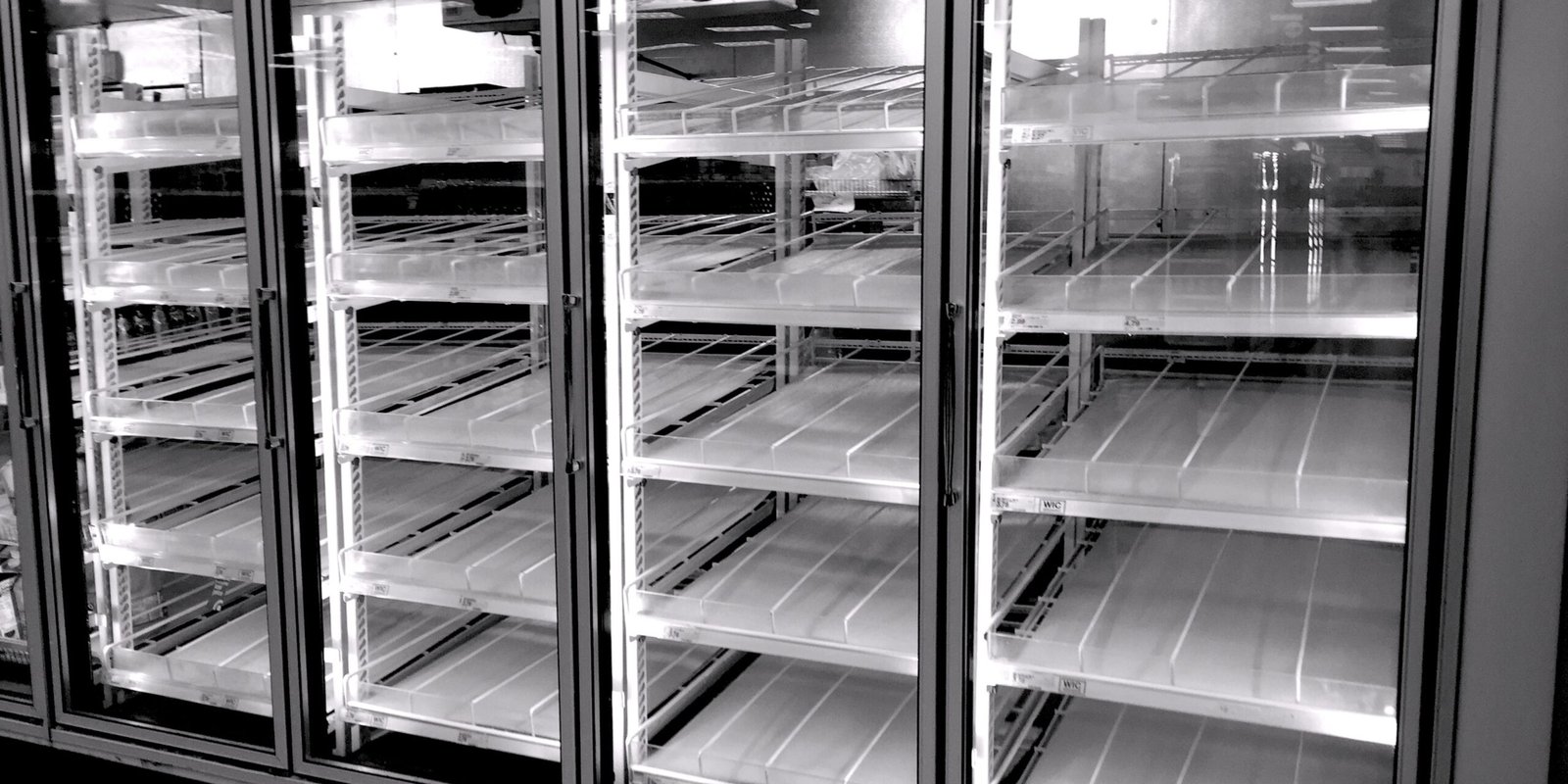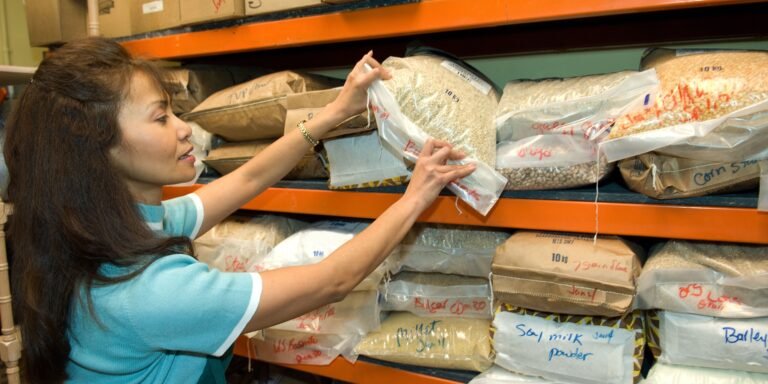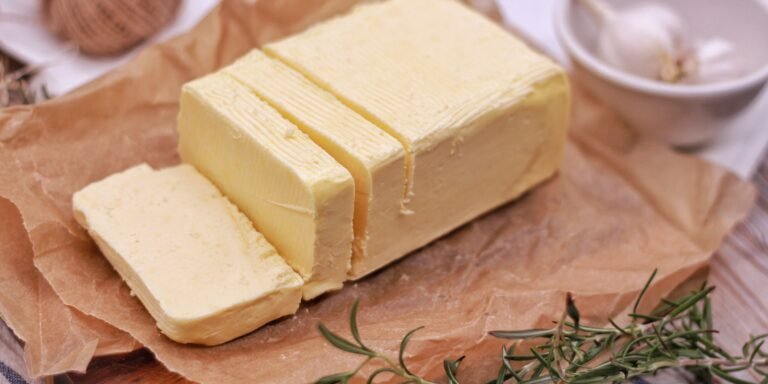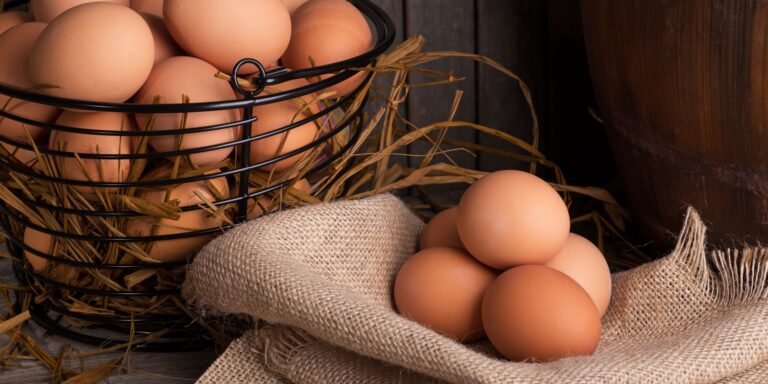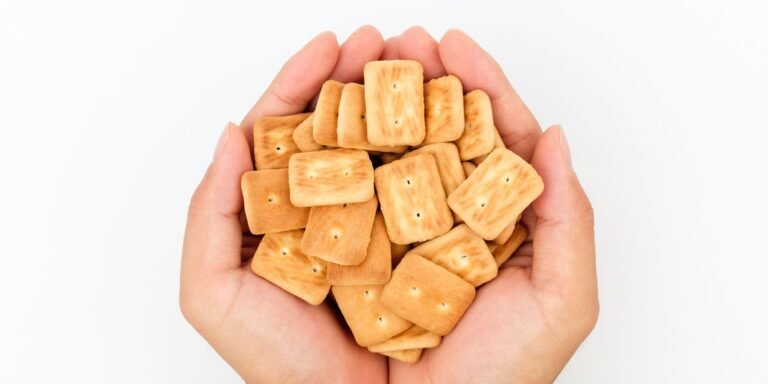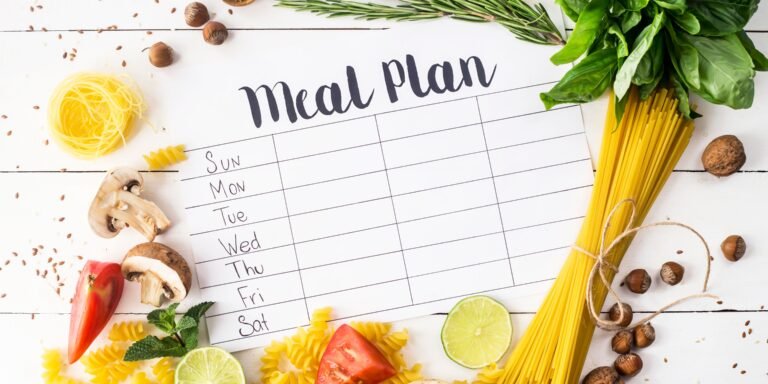How to Plan for and Survive a Food Shortage
This post may contain affiliate links, full disclosure here.
Every year, disasters, droughts, flooding, wildfires, and wind storms disrupt hundreds of thousands of lives, and the number appears to be increasing if the recent global pandemic is included. Every disaster or pandemic has long-term consequences, such as people being deprived of basic necessities such as food and water. After all that we’ve been through in recent years, you can’t help but wonder if a food shortage is on the way. Given the rising cost of groceries, the slowdown in meat packaging production, failing farms, labor shortages, and political upheavals, one might think that food storage is on the horizon.
See also: Top 20 Barter Items to Stockpile
How To Prepare For A Food Shortage
To prepare for and survive a food shortage, identify potential risks in your area, inventory your current resources (especially food and water), develop a food storage plan to grow both short and long term food storage, start a garden (even if it’s small or only indoors), learn to preserve foods you buy or grow yourself, raise chickens and other livestock.
Don’t be alarmed! But keep in mind that those who are prepared will not be afraid.
Let’s dig a little deeper into these items and ideas for surviving a future food shortage.
See also: How To Store Quinoa Long-Term
Identify Food Shortage risks In Your Local Area
Is your geographic location more prone to drought, flood, tornado, wildfire, high winds, earthquakes, or something else? Natural disasters must be considered because they can occur quickly and without warning, leaving you and your family without food or fresh water. Perhaps inflation will take hold in your country, causing food prices to skyrocket.
- droughts
- floods
- tornados
- wildfires
- high winds
- hurricanes
- earthquakes
- or something else
Local responders may not be able to reach you immediately if a disaster occurs, so being prepared and understanding what to do can reduce fear, anxiety, and losses. Communities, families, and individuals should be prepared in the event of a disaster. People can also lessen the impact of disasters and, in some cases, avoid them entirely if they are prepared.
To plan on surviving being stranded by disasters, you must have at least 3 days (72 hours) worth of food and supplies to allow time for emergency responders to reach you. Finding a premade kit that can be stored for the long term is an easy way to obtain a 3-day emergency food supply.
You can also prepare your own emergency food; just make sure to keep it in its own bucket or bag that you can carry with you if you need to leave your house quickly.
Food shortages are caused by rising food prices or slowed food production.
Could food production or packaging companies go out of business for whatever reason, resulting in a severe shortage of food in your local grocery store? Given recent events, it doesn’t seem so far-fetched to believe that companies can close down on a global scale. It appears that rapidly rising food prices are causing more concern than I could have imagined. We can’t just shrug and pretend that this isn’t happening or that it’s not possible. It’s not only possible, but it’s happening right now!
Make a list of your current resources (especially food and water) if you’re preparing for a food shortage.
To survive a food shortage, it is critical to understand what resources you already have on hand in order to determine what you need to stock up on.
Food reserves
Consider how much food you currently have on hand. How long will you and your family be able to survive on that food? Determine how much food you’ll need to feed your family for three months, and then start thinking about how much you’ll need to stockpile for up to a year. Use our handy food storage calculator to figure out how much food storage you’ll need for yourself and your family.
Water storage or an emergency water purifier
How much freshwater do you have right now? In an emergency, a few packages of water bottles, gallon water jugs, and, if possible, a couple of food-grade water barrels come in handy.
Depending on your situation, storing a large amount of water may be impractical, so having a good water filter that you can fit in a bag or 72-hour kit could be life-saving.
Fresh Foods
Do you live in a rural area with a yard that you can use for a home garden, or do you live in a city apartment? Even if you don’t have a yard, get some pots and start an indoor garden. It is worthwhile to consider whether outside or inside the garden is appropriate for you in your situation. Gardens are an excellent way to become self-sufficient and provide food for oneself without relying on a grocery store.
Tools
What equipment do you have at home? Food preparation tools such as a wheat grinder, a bread mixer, or a pressure canner are examples of tools. Gardening tools, beekeeping supplies, and specialty tools for raising livestock are all examples of home production tools.
Skills
Learn everything you can about food storage, gardening, food preservation, and basic survival skills. In the event of a widespread food shortage, this education will literally save lives.
Create A Food Shortage Plan
Can you devote a portion of your monthly income to increasing your food stockpile/supply? Create a simple plan to acquire a small amount of food storage each month. Simply decide how much money you want to set aside each month for food storage.
A short-term food supply could consist of any number of foods that you already have in your pantry and consume on a daily or weekly basis. The wonderful reality of a two-week to three-month food supply is that as long as you use and rotate your food supply, most non-perishable foods will work well in your storage plan.
If packaged properly, a long-term food supply of basics such as wheat, rice, beans, oats, pasta, sugar, and salt can be stored for 20 to 30 years. Foods that have been freeze-dried or canned are ideal for long-term food storage. A long-term food supply could be one of the best insurance policies you ever invest in if you ever experience a food shortage.
What should I buy to prepare for food shortage?
- Flour
- Rice
- Noodles and Pasta (various varieties, white & wholewheat)
- Vegetables (Freeze Dried, Canned, and Dehydrated)
- Fruit (Freeze Dried, Canned, and Dehydrated)
- Oats
- Sugar (white, soft brown, dark brown)
- Vegetable and Olive Oil
- Powdered Milk
- Salt, Baking Powder, Baking soda, other Herbs, and Spices
- Chicken (Canned and Freeze Dried)
- Beef (Canned, Freeze Dried, Dehydrated, and Jerky)
- Cans of Soup
- Peanut Butter (protein)
- Nuts (variety of)
- Beans (various varieties of dried and canned)
- Full Freeze Dried Meals
Consider the following when purchasing food storage to prepare for a food shortage:
What’s on offer
Foods that have been freeze-dried, canned, dehydrated, or are otherwise shelf-stable
Contains a lot of calories.
Within your financial constraints
Foods that you enjoy and consume on a regular basis
Start a garden (even if it’s small or only indoors)
Gardening is an excellent way to prepare yourself and your family for a future food shortage. One of the most important investments you can make is in your own education, and learning to garden can help you grow your own food.
Simple steps to start a garden outdoors
To get started, the National Gardening Association recommends the following ten steps.
Locate the proper location.
Choose a location for your garden that gets plenty of suns, has plenty of space, and is close to your hose or water source. Locate a level area to aid in erosion prevention.
Choose vegetables
Choose your produce based on your climate, space, tastes, and level of expertise. Newcomers may want to start with some of the simpler crops, such as carrots, beans, cucumbers, peppers, and lettuce.
Prepare the soil
To condition, the soil for your plants, incorporate compost and natural fertilizers into your garden. Garden supply stores can test your soil’s acidity and recommend supplements, or you can simply buy specially made soil in bulk.
Examine the planting dates.
Because growing conditions and ripening cycles vary depending on the plant and season, you should not sow all of the seeds at the same time. Planting dates are printed on seed packets. Before making a gardening schedule, consider the ideal conditions for each vegetable you want to plant.
Planting seeds
Plant your seeds or plants in the soil, paying close attention to the depth and spacing instructions.
Water
Spray the garden gently with water to keep the soil evenly moist during the growing season. Get a spray nozzle for your hose to make a gentle rain-like mist for your garden.
Weed control
Mulching is the most effective way to keep weeds at bay. To prevent weeds from overtaking your crops, apply a 2- to 4-inch layer of organic mulch to your garden. If weeds appear in the garden, grab them low on the stems and yank sharply, ensuring that the entire root is extracted.
Fertilize
To keep the soil rich, lightly till it by hand and add fertilizer. You can buy ready-made garden fertilizer or make your own using ingredients such as Epsom salt, eggshells, fish tank water, and kitchen compost.
Choose, savour, preserve, and store
Harvest vegetables when they are young and tender, but only when you intend to use them. Remove root crops as soon as they reach an edible size. Cut leaf crops to within 2 inches of the ground to collect them. Finally, enjoy your harvest while also preserving it!
Starting An Indoor Garden
Growing a garden using pots indoors is also possible for those who may not have space outside.
Food ideas to grow inside include:
- Avocados
- Radishes
- Mandarin oranges
- Carrots
- Microgreens
- Herbs
- Potatoes
- Spinach
- Tomatoes
- Strawberries
You’ll need the following items:
- Depending on what you’re growing, the light should range from low to medium to high.
- Potting soil
- Drainage-holed containers
- Water and Humidity
- Air circulation – to help pollination and prevent mould and fungus.
- Temperature – 60°F/15°C to 70°F/20°C, depending on the plants.
- Fertilizer – As your plants grow, your soil will require feeding.
Learn how to preserve foods that you either buy or grow yourself
Preserving fruits, vegetables, meats, and other foods is an excellent skill to develop in order to prepare for a food shortage. You can learn how to preserve your harvest if you have or plan to start a garden. You can learn how to preserve fresh fruits and vegetables if you buy them in bulk. If you buy extra fish, chicken, beef, pork, or other meat, you can learn how to preserve it for long periods of time.
Methods of Preservation
- Canning (pressure canning or water bath canning)
- Freezing
- Drying
- Pickling
- Freeze Drying
Knowing how to preserve foods using the five methods listed above can be extremely useful if you ever face a food shortage. Freeze-drying is my preferred method of food preservation. You can freeze-dry your garden produce, make the ideal emergency food supply, and prepare camping meals and healthy snacks. In contrast to other methods of food preservation, freeze-drying does not shrink or toughen the food and retains flavor, color, and nutrition. Freeze-dried food can be stored for up to 25 years.
Livestock
Consider getting chickens for eggs and poultry and/or other livestock such as a cow for beef, a pig for pork, or fish to help you survive a food shortage. Consider cattle for ongoing milk supply and eventual meat supply, depending on your climate and the size of your land.
Chickens aren’t difficult to raise and are well worth considering. Watch the video below to see how simple it is to raise chickens.
Fishing
Learning how to catch and fillet fish can help you and your family get through a food crisis. I grew up fishing and can honestly say that it’s not only a great way to catch your own food, but it’s also a great way to get away from everyday life, stresses, and the pandemic. Here’s a YouTube video of Luke showing you how to choose gear, locations, bait, rigs, and more to help you get started fishing.
Freezing Extra Meat
The benefit of doing so is that it is less expensive than buying smaller quantities of ground beef, steaks, roasts, and hamburger patties at the store. Furthermore, I’m sure you’ve all seen the price of beef at the supermarket… Concerns about rising food prices and food scarcity in the near future are understandable.
Emergency Items To Grab
Finally, it is critical to stock up on other emergency supplies. If there is a future food shortage, there will be some panic, and people will stock up on many items other than food. Competing with people in stores will be difficult, if not dangerous, at that point. Make a list of the things that are most important to you and begin collecting them.
- First Aid Kit
- Medication and over the counter drugs
- Waterproof Lighter/Matches
- Flint and steel
- Gas Stove
- Propane
- Garbage Bags
- Toilet Paper
- Plates/Bowls
- Utensils
- Wipes
- Water Purifier
- Batteries
- Sunscreen
- Bug Spray
- Hand/Foot/Body Warmers
- Shelter/Tent
- Ax
- Shovel
- Duct Tape
- Walkie Talkies
- Extra Blankets/Bedding
- Contact Solution/Glasses
- Deck of Cards (for entertainment)
- Hard Drive with backups of all your pictures and important documents
- Money (Cash in small bills)
How to Plan for and Survive a Food Shortage Bottom Line
I sincerely hope that we will not face any food shortages in the future, but I am not willing to jeopardize my wife’s and children’s health and safety by ignoring the possibility. From natural disasters to global pandemics, we may face a food shortage or two during our lifetime. Furthermore, with rising food prices, looming government shutdowns, and business closures, many people’s fear of a food shortage is becoming more real. Prepare now, and you will be fearless.

